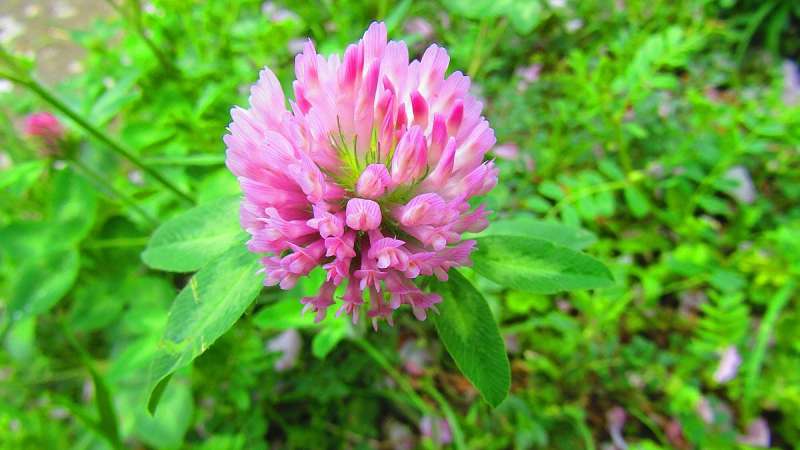Fungicide combo combats devastating red clover disease

Red clover, an important forage crop for grazing cattle, can be protected against two major fungal diseases by a newly developed integrated pest management strategy. Published in Crop Protection, the study says that three fungicides—carbendazim, wettable sulfur and hexaconazole—along with the biocontrol agent Trichoderma viride, were found effective in controlling powdery mildew and crown rot that attacks red clover or Trifolium pratense L.
Both diseases severely affect the seed yield of red clover, a leguminous plant important as forage in temperate regions throughout the world including the Himachal Pradesh and Uttarakhand states of northern India.
"Results from a five-year study indicate that seed treatment with carbendazim followed by three foliar sprays of hexaconazole and seed treatment with carbendazim followed by one foliar spray each of Trichoderma viride, wettable sulfur and hexaconazole at 10 days interval can effectively control powdery mildew and crown rot diseases," the study said.
Devinder Kumar Banyal, an author of the study and professor at the C.S.K. Himachal Pradesh Agricultural University, Palampur, told SciDev.Net that applications of these treatments in different combinations showed significant superiority over other methods in reducing disease severity and in ensuring higher seed yield.
"There are no reports for comprehensive management of crown rot and powdery mildew," Banyal said. "The development of resistant varieties is the most efficient and ecological way of controlling these diseases in leguminous forage crops but resistant varieties are not available in India and this necessitated the development of an alternate management strategy."
Research studies to evaluate the use of red clover by lactating dairy cows, conducted at the University of Wisconsin-Madison, indicate that red clover is an excellent feed for many classes of livestock including dry dairy cows and cattle reared for beef.
Powdery mildew symptoms appear as small patches of fine, white to pale gray powdery covering on the stems and leaf surfaces, the study says. The infected leaves become yellow and wither, which decreases the quality of the fresh forage, hay and survival of the plants.
Crown rot, one of the most destructive diseases of red clover in temperate regions with snow cover, covers the entire plant with white mycelium, eventually killing the plant. Mycelium can also spread from plant to plant when there is physical contact so that entire patches of dead plants are often seen in a field of red clover.
Anoop Kuttiyil, researcher in plant pathology and assistant professor at Zamorin's Guruvayurappan College, Kozhikode, says that scientists have been exploring alternate chemical and biological methods to control crown rot and powdery mildew in red clover caused by the Sclerotinia trifoliorum and Erysiphetrifoliorum fungi respectively with little success.
"Different species of these two fungi are notable for causing heavy damage to many agriculturally important crops," Kuttiyil told SciDev.Net. "S. trifoliorum produces bodies called sclerotia that survives several years while E.trifoliorum produces sexual fruiting bodies called chasmothecia. Both structures contain large number of spores capable of reinfecting the host, making management of these diseases difficult."
According to the Food and Agriculture Organization, red clover is an important fodder in pastoral livestock farming systems because of its high yield, protein content, nutritional value, medicinal properties and its ability to fix atmospheric nitrogen in the soil.
Red clover is well adapted to poorly drained soils with varieties of it known to have higher forage yields than alfalfa, according to the studies at the University of Wisconsin.
More information: Nitish Rattan Bhardwaj et al, Integrated management of crown rot and powdery mildew diseases affecting red clover (Trifolium pratense L.), Crop Protection (2022). DOI: 10.1016/j.cropro.2022.105943
Provided by SciDev.Net





















